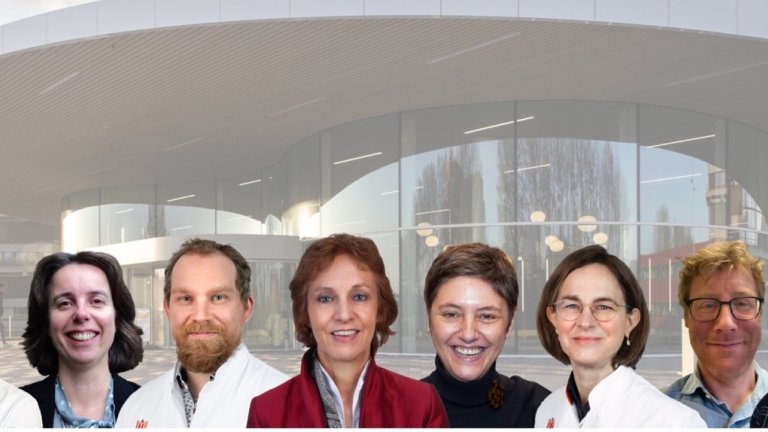About
Leukodystrophies are rare genetic disorders of the brain and spinal cord white matter. Many leukodystrophies start in infancy or childhood and lead to progressive deterioration of motor and often also cognitive skills. Some leukodystrophies, however, start in adults. For most of the leukodystrophies there are no curative or even disease modifying treatments.
The Amsterdam Leukodystrophy Center (ALC) was founded by professor M.S. van der Knaap in 2000 and is part of the department of Child Neurology at the Emma Children’s Hospital of the Amsterdam UMC. The ALC is an expert center of the European Reference Network “Rare Neurological Disorders” (ERN-RND) and provides diagnostic testing and clinical care for children, and diagnostic testing and advice for therapy and follow-up of adults.
The team closely collaborates with colleagues in the Amsterdam UMC, other centers in the Netherlands, and patient organizations from all over the world. As leukodystrophies are ultra-rare disorders, these collaborations are essential to advance research and patient care.
Research
Natural history and biomarkers
For rare disorders the natural history is generally not well known. At what age do patients develop symptoms? Will they need a wheelchair, and if yes, at what age? This information is not only important for patients and families, but also for the development of new therapies, as treatment effects can only be evaluated when compared to untreated patients. Natural history studies in patient cohorts can also be used to identify biomarkers (for instance molecules in blood and cerebrospinal fluid, or MRI scans) that reflect disease severity or predict progression. These markers could then be used as (surrogate) outcome measures in clinical trials.
The Amsterdam Leukodystrophy Center leads several studies on the natural history, including biomarker identification, of leukodystrophies and participates in studies from other centers.
Disease mechanisms
Why do certain genetic defects lead to a leukodystrophy? What are the cellular processes which are most affected? What are the changes in brain tissue of patients with leukodystrophies, and what can we learn from these findings? How could a certain drug modify the disease? Researchers of the center work on these questions, using cell models, mouse models and brain tissue from deceased patients.
New treatments
Research of the Amsterdam Leukodystrophy Center will hopefully eventually lead to effective treatments for leukodystrophies. One example is Vanishing White Matter: findings made in patient brain tissue and mouse models were translated to the first treatment trial for this disease, which is ongoing. The center is also a trial site for several international multicenter trials for leukodystrophies.
Projects
Treatments for Vanishing White Matter
In 2021, the first clinical trial in VWM was started using Guanabenz. In collaboration with the international consortium of clinical VWM experts, we are developing a master protocol for upcoming trials in VWM. The trial is currently recruiting, for more information, see Clinical Trials - Vanishing White Matter Consortium (vwmconsortium.org)
In addition, we are developing a trial master protocol for future clinical trials in VWM, taking into account the rarity of the disease and the different presentation in young children and patients developing their first symptoms later on in life. Using innovative statistical methods and trial design, the number of trial participants can be minimized.
Megalencephalic Leukoencephalopathy with subcortical Cysts
MLC is an ultrarare leukodystrophy, with a relatively high incidence in Indian-Agrawal and Turkish populations. MLC has its onset in the first year of life with a big head. Despite its early onset, it is a rather slowly progressive disease with epilepsy, motor disability, and cognitive decline. We have a beginning understanding of disease mechanisms, involving brain ion and water homeostasis. This homeostasis is crucial to prevent brain edema, a potentially life threatening condition. Defects in these homeostatic pathways cause chronic brain white matter edema. MLC is one of such diseases.
Our current studies are focused on defining the phenotypic spectrum of MLC, identification of different diseases caused by other defects in the homeostatic pathways, and better understanding of brain ion and water homeostasis in order to find openings for treatment.
In close collaboration with patient advocates, we will set up a patient registry to collect natural history data.
Researchers

Contact
Amsterdam Leukodystrophy Center
E-mail adress: kinderneurologie@amsterdamumc.nl
Website: vumc.com/center-for-children-with-white-matter-disorders


